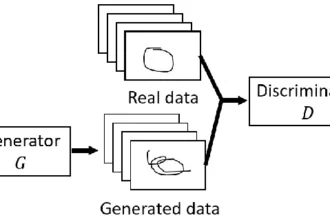Understanding Key Metrics for Evaluating LLM Performance
Ah, the world of Large Language Models (LLMs) and their mysterious metrics! It’s like diving into a treasure trove filled with word puzzles and text riddles. Let’s unravel the secrets of how these LLMs are measured to ensure they are up to par in generating top-notch human-like text.
Now, when it comes to evaluating these complex language models, we can’t just rely on wishful thinking. We need a solid set of metrics to gauge their performance accurately. So, buckle up as we explore the key metrics used for assessing LLMs!
Picture this: you have an LLM trained on a vast sea of text data, and you want to ensure it’s not just babbling nonsense. That’s where metrics like perplexity come into play. Perplexity measures how well a language model predicts a sample of text by calculating the inverse probability normalized by the number of words.
- Perplexity is a key metric for evaluating LLMs, measuring how accurately the model predicts text samples.
- A lower perplexity score indicates better predictive performance, like having a working crystal ball for your language model.
- Accuracy is crucial in assessing LLM performance, determining how well the model makes correct predictions.
- High accuracy separates the geniuses from the blunderers in the world of language models, ensuring consistent bulls-eye hits.
- The F1-score balances precision and recall, acting as a tightrope walker between avoiding false positives and catching true positives.
Table of Contents
ToggleUnderstanding Key Metrics for Evaluating LLM Performance:
Perplexity: Calculating perplexity involves assessing how accurately your language model predicts text samples. It’s like giving your model a pop quiz to see if it can predict what comes next in a sentence based on its training data.
Saviez-vous: A lower perplexity score indicates better predictive performance. It’s like having a crystal ball that actually works!
Accuracy: Next up is accuracy, which determines how well your language model makes correct predictions. Think of it as grading your model based on its ability to get things right.
Saviez-vous: Accuracy helps you separate the geniuses from the blunderers in the world of language models. Aim for high accuracy to ensure your model is hitting the bulls-eye consistently!
Let’s take a moment and appreciate the F1-score, which strikes a balance between precision and recall in assessing model performance. Imagine trying to walk a tightrope between avoiding false positives and catching all the true positives – that’s what F1-score is all about!
So there you have it! These metrics are like superhero badges for LLMs, helping us gauge their performance levels efficiently.
But hold onto your hats because we have more intriguing metrics lined up ahead! Stay tuned for an exciting journey through evaluation metrics tailor-made for deciphering these marvels of artificial intelligence!
Frameworks and Tools for LLM Evaluation
In the vast landscape of assessing Large Language Models (LLMs), having a robust and reliable evaluation framework is like having a compass in a text-filled jungle – it guides you through the maze of options and helps you find the golden path to top-notch performance. As technology leaps forward, distinguishing between the plethora of available alternatives can feel like searching for a needle in a haystack, making an effective evaluation framework even more crucial for dissecting LLM quality accurately.
When evaluating LLMs, various frameworks and platforms have emerged to serve as beacons in this sea of linguistic innovation. From heeding Prompt Flow in Microsoft Azure AI Studio to dancing with LangSmith by LangChain, these evaluation frameworks like Weights & Biases or DeepEval are the guiding stars that illuminate the path towards understanding LLM prowess. These tools not only allow for comparative analysis but also arm developers with tangible data necessary to fine-tune LLMs to suit specific needs.
Now, let’s zoom into system evaluations within the LLM framework where components like prompts and contexts play starring roles in real-world model applications. Imagine these components as spices in a master chef’s kitchen – crucial for adding flavor to your model’s output. Tools such as OpenAI’s Eval library or platforms from Hugging Face act as trusty sous chefs, assisting in evaluating foundational model performances. They provide not only insights but also actionable data essential for customizing LLMs tailored to individual requirements.
Steering our ship back to evaluating LLMs directly, having an authentic evaluation framework is akin to having X-ray vision – it allows you to see through the layers of text and assess models with precision. How can you harness such power? By utilizing an evaluation framework in three key ways:
- Quantitatively assessing model performance
- Qualitatively analyzing text generation quality
- Comparing models for specific use cases
So, don your metaphorical detective hat and dive into the world of LLM evaluation armed with these invaluable tools!



